Art World
Divers Have Discovered an ‘Exceptional’ Trove of Artifacts Tied a Llama Sacrifice Ritual in South America’s Largest Lake
The Tiwanaku state ritually sacrificed llamas on the Khoa reef.
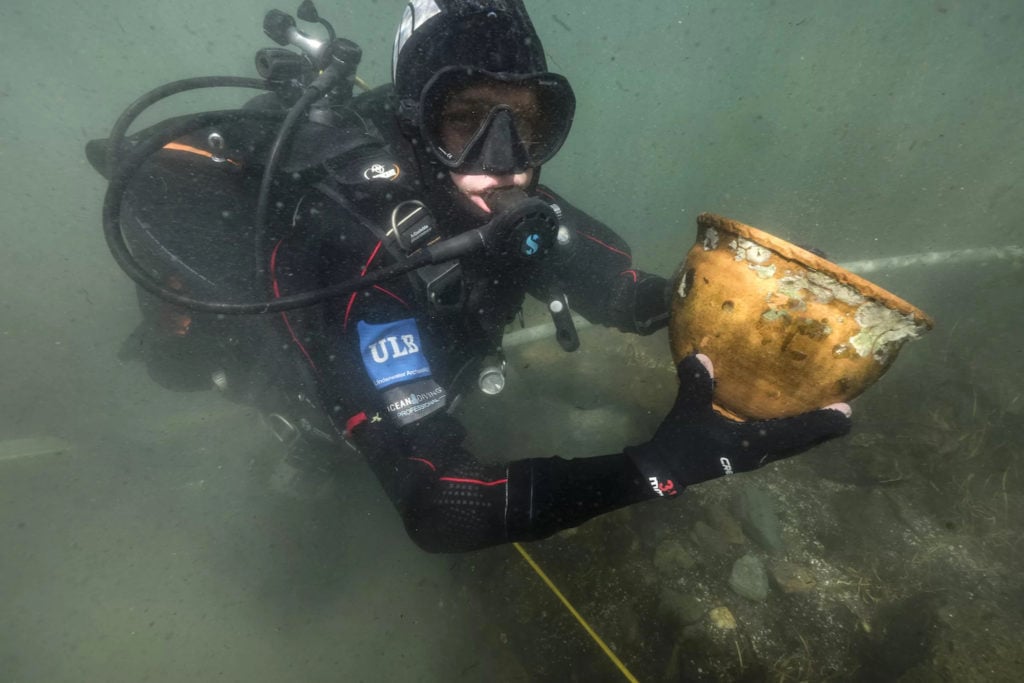
The Tiwanaku state ritually sacrificed llamas on the Khoa reef.

Sarah Cascone

Marine archaeologists have discovered a strikingly well preserved ancient ceremonial site in Lake Titicaca, on the border of modern-day Peru and Bolivia. Divers recovered ritual offerings, including slaughtered animals and gold ornaments, on the Khoa reef. The finds date from between the 8th and 10th centuries AD, when the pre-Inca Tiwanaku people presided over the Lake Titicaca basin. The region had a population of around 1 million people prior to the Spanish conquest.
The Tiwanaku people traveled to the reef by boat and carried out elaborate religious ceremonies there, taking in an impressive panoramic view of the lake and the surrounding mountains.
Researchers turned their attention to the reef after several amateur divers recovered ancient artifacts submerged roughly 16 feet underwater some six miles offshore of the lake’s Island of the Sun. The trove of ancient artifacts were discovered through three systemic excavations carried out beginning in 2013. They suggest that the Tiwanaku state decorated llamas with leather and gold ornaments in preparation for ritual sacrifices that also involved gold and carved stone offerings.
“What is great about these artifacts is that, beyond their beauty and the quality of manufacture, they were discovered in an undisturbed context,” Christophe Delaere, a marine archaeologist at the University of Oxford and the Free University of Brussels, told the Guardian. “This is one of the advantages of underwater heritage. Lake Titicaca protects its ancient material culture from time and man. Never before have so many artifacts of this quality been discovered. The history that these objects tell us is exceptional.”
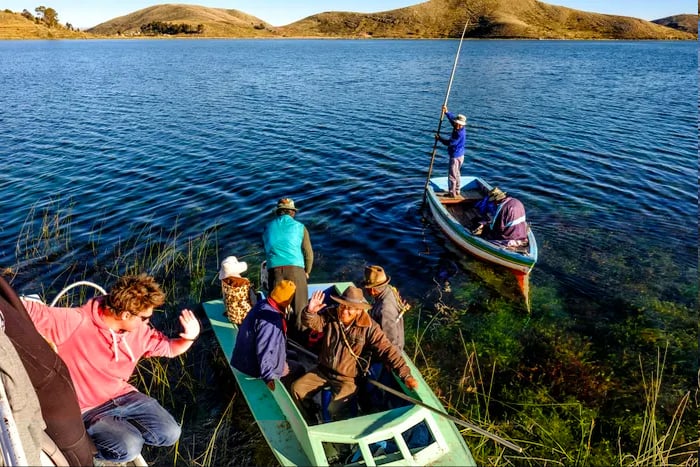
The archaeological site at Lake Titicaca. Photo by Teddy Seguin
Among the impressive finds are a lapis lazuli puma figurine, ceramic puma incense burners, a gold medallion, and other gold ornaments. There were also Spondylus oyster shells native to the oceans off Ecuador—over 1,200 miles away—suggesting the civilization was part of an impressive trade network. The research team published their findings this week in the Proceedings of the National Academy of Sciences.
“The Tiwanaku is the greatest Native American empire that many Americans have never heard of,” Paul Goldstein, an archaeologist in the Department of Anthropology at UC San Diego who was not involved in the research project, told National Geographic. “Every time we find something that reflects the complexity of the society, it adds to our deeper knowledge of the origins of complex societies worldwide.”
See artifacts from the astounding discovery below.
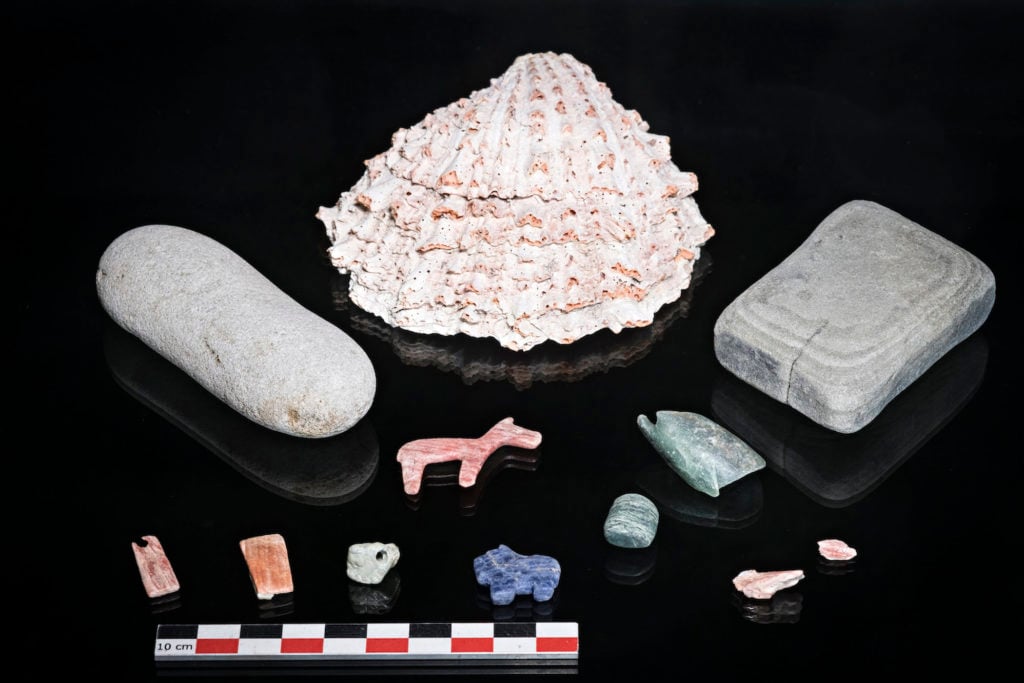
Artifacts from the archaeological site at Lake Titicaca. Photo by Teddy Seguin
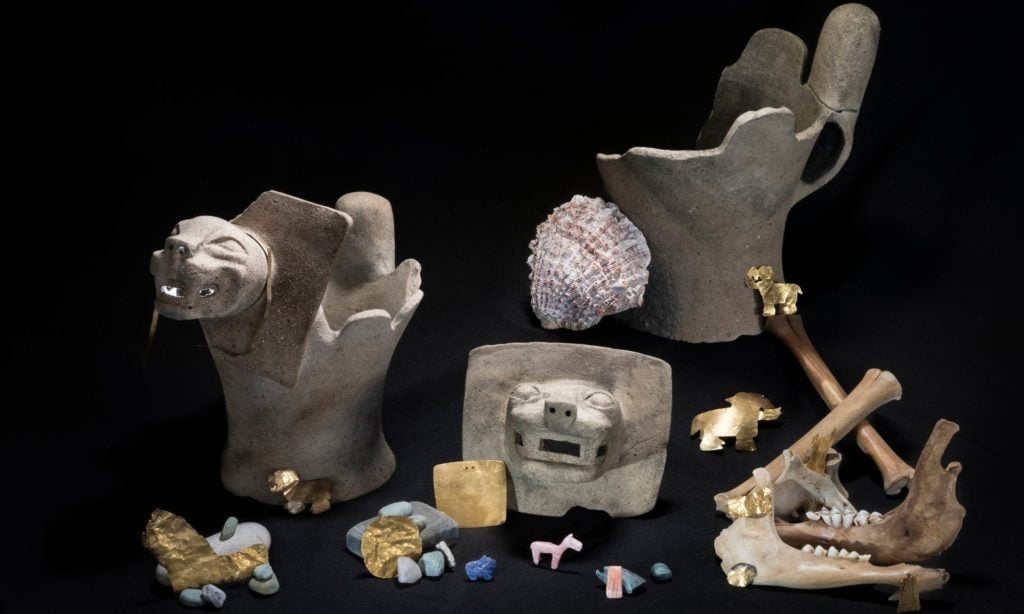
Artifacts from the archaeological site at Lake Titicaca. Photo by Teddy Seguin
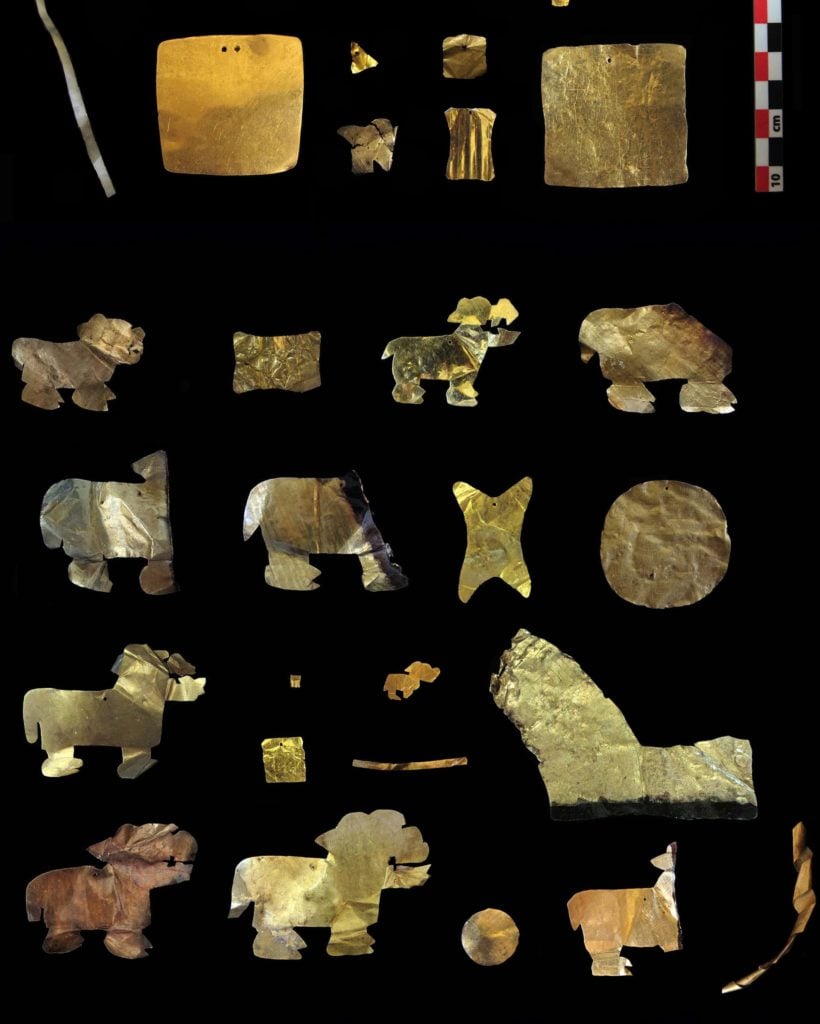
Artifacts from the archaeological site at Lake Titicaca. Photo by Teddy Seguin